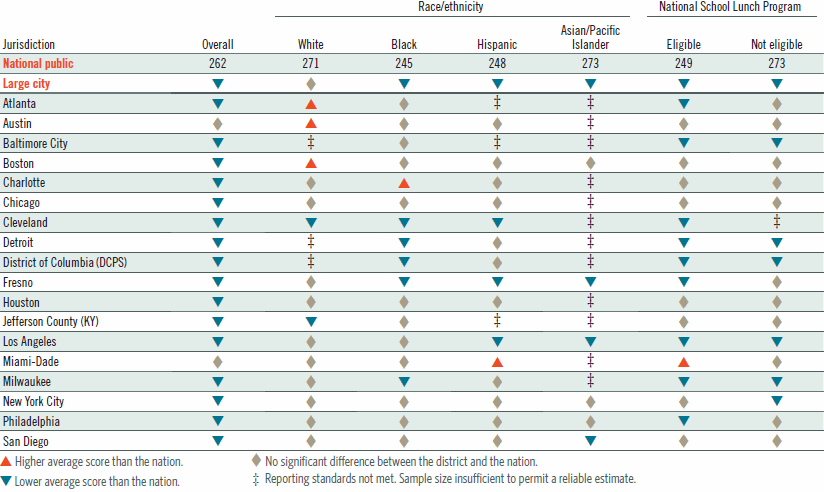 Even though most TUDA districts performed below the national average overall, scores for student groups in some districts were higher than the scores for their peers in the nation.
Even though most TUDA districts performed below the national average overall, scores for student groups in some districts were higher than the scores for their peers in the nation.
- Among the 16 districts where overall average scores were lower than the national average, scores were higher for White students in Atlanta and Boston and for Black students in Charlotte.
- Only Cleveland showed lower scores for all categories of students by race/ethnicity and eligibility for the National School Lunch Program with samples large enough to report results.
Comparison of district and national average scores for eighth-grade public school students in NAEP reading, by selected student groups: 2009

NOTE: Black includes African American, Hispanic includes Latino, and Pacific Islander includes Native Hawaiian. Race categories exclude Hispanic origin. The NAEP Reading scale ranges from 0 to 500. DCPS = District of Columbia Public Schools.
SOURCE: U.S. Department of Education, Institute of Education Sciences, National Center for Education Statistics, National Assessment of Educational Progress (NAEP), 2009 Reading Assessment.